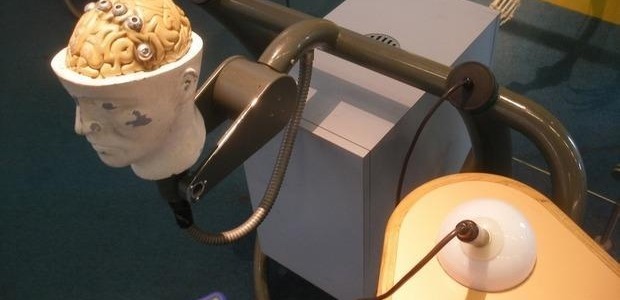advertisement
What are the top 10 tech trends of 2017?
Data science, advanced machine learning and artificial intelligence will be centre stage technologies shaping business in 2017 and beyond. That’s…

Data science, advanced machine learning and artificial intelligence will be centre stage technologies shaping business in 2017 and beyond.
That’s according to analyst firm, Gartner, which predicts that enterprise will see “intelligence everywhere” as new software-based systems, which are programmed to learn and adapt, permeate businesses within the next three to five years.
As outlined by Gartner vice president and fellow, David Cearley, these intelligent trends will intertwine to form a ‘digital mesh’, blurring physical and digital workspaces.
advertisement
AI and Machine Learning
Artificial intelligence (AI) and advanced machine learning (ML) are intelligent machines that can understand, learn and operate autonomously.
“Applied AI and ML give rise to a spectrum of intelligent implementations, including physical devices such as robots, autonomous vehicles and apps and services such as virtual personal assistants and smart advisors,” Cearley said.
advertisement
“These implementations will be delivered as a new class of obviously intelligent apps and things as well as provide embedded intelligence for a wide range of mesh devices and existing software and service solutions.”
Intelligent Apps
“Over the next 10 years, virtually every app, application and service will incorporate some level of AI,” Cearley added.
advertisement
Eventually, Cearley believes this will lead to the transformation of the workplace as intelligent apps can perform human functions such as prioritising emails and highlighting important content and interactions.
“This will form a long-term trend that will continually evolve and expand the application of AI and machine learning for apps and services,” he added.
“As a result, intelligent apps will enable more specialised tasks to be completed such as sales and customer service.”
Virtual and Augmented Reality
By 2021, Cearley said the landscape of immersive consumer and business content and applications will evolve dramatically, according to Cearley.
“VR and AR capabilities will merge to form a more seamless system of devices capable of orchestrating a flow of information that comes to the user as hyper personalised and relevant apps and services,” he explained.
“Integration across multiple mobile, wearable, Internet of Things (IoT) and sensor-rich environments will extend immersive applications beyond isolated and single-person experiences.
Read more:From niche to mainstream – 3D printer shipments double in 2016
“Rooms and spaces will become active with things, and their connection through the mesh will appear and work in conjunction with immersive virtual worlds.”
Digital Twin
Gartner described a digital twin as a software model of a physical thing or system that relies on sensor data to understand it state, respond to changes, improve operations and add value.
Digital twins are comprised of metadata, event data and analytics.
In the next three to five years, Cearley said enterprise will use digital twins to proactively repair and plan for equipment service, manufacturing processes and improve operations to run factories.
As a result, digital twins will embody the same skills of humans and traditional monitoring devices like pressure gauges and valves.
Blockchain
Blockchain is a distributed ledger in which value exchange transactions (in bitcoin or tokens) are sequentially grouped into blocks and recorded across a peer-to-peer network that uses cryptographic trust and assurance mechanisms.
Read more:Partners on their toes as IoT adoption heightens in Australia
Currently the hype is around the financial services industry, but according to Gartner, there are other industries the technology can be applied to such as music distribution, identity verification and supply chain.
“Distributed ledgers are potentially transformative but most initiatives are still in the early alpha or beta testing stage,” Cearley said.
Conversational Systems
While humans currently interact through chatbots, smartphones, tablets and other microphone-enabled speakers, Cearley said the new “device mesh” will give rise to a new set of endpoints for people to interact.
As new connection models expand, Cearley said there will be greater cooperation between devices, paving the way for new ambient digital experiences.
Mesh App and Service Architecture
Mobile apps, web apps, desktop apps and IoT apps link together to create an architecture of back-end services to build what users view as an “application”.
Cearley said in the future, this will enable users more optimised solutions for desktops, smartphones and other endpoints as a well as a continuous experience as users move across different channels.
Read more:Global PC shipments continue to fall
Digital Technology Platforms
Information systems, customer experience, analytics and intelligence, IoT and business ecosystems form the building blocks of every modern business.
These platforms are a critical enabler for any digital business, according to Cearley.
Adaptive Security Architecture
Cearley said the intelligent ‘digital mesh’ combined with new digital platforms means security has to become more complex.
“Established security technologies should be used as a baseline to secure Internet of Things platforms,” Cearley added.
“Monitoring user and entity behavior is a critical addition that is particularly needed in IoT scenarios.
“However, the IoT edge is a new frontier for many IT security professionals, creating new vulnerability areas and often requiring new remediation tools and processes that must be factored into IoT platform efforts.”
——————————-
The Author is: Holly Morgan | ARNnet